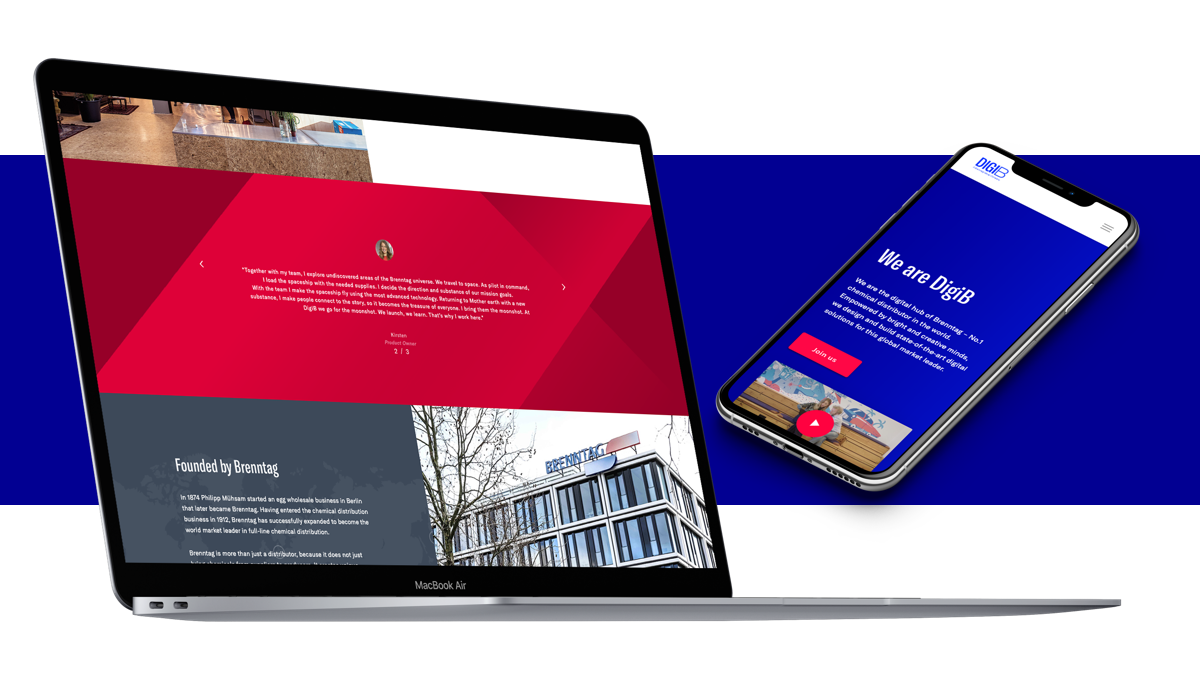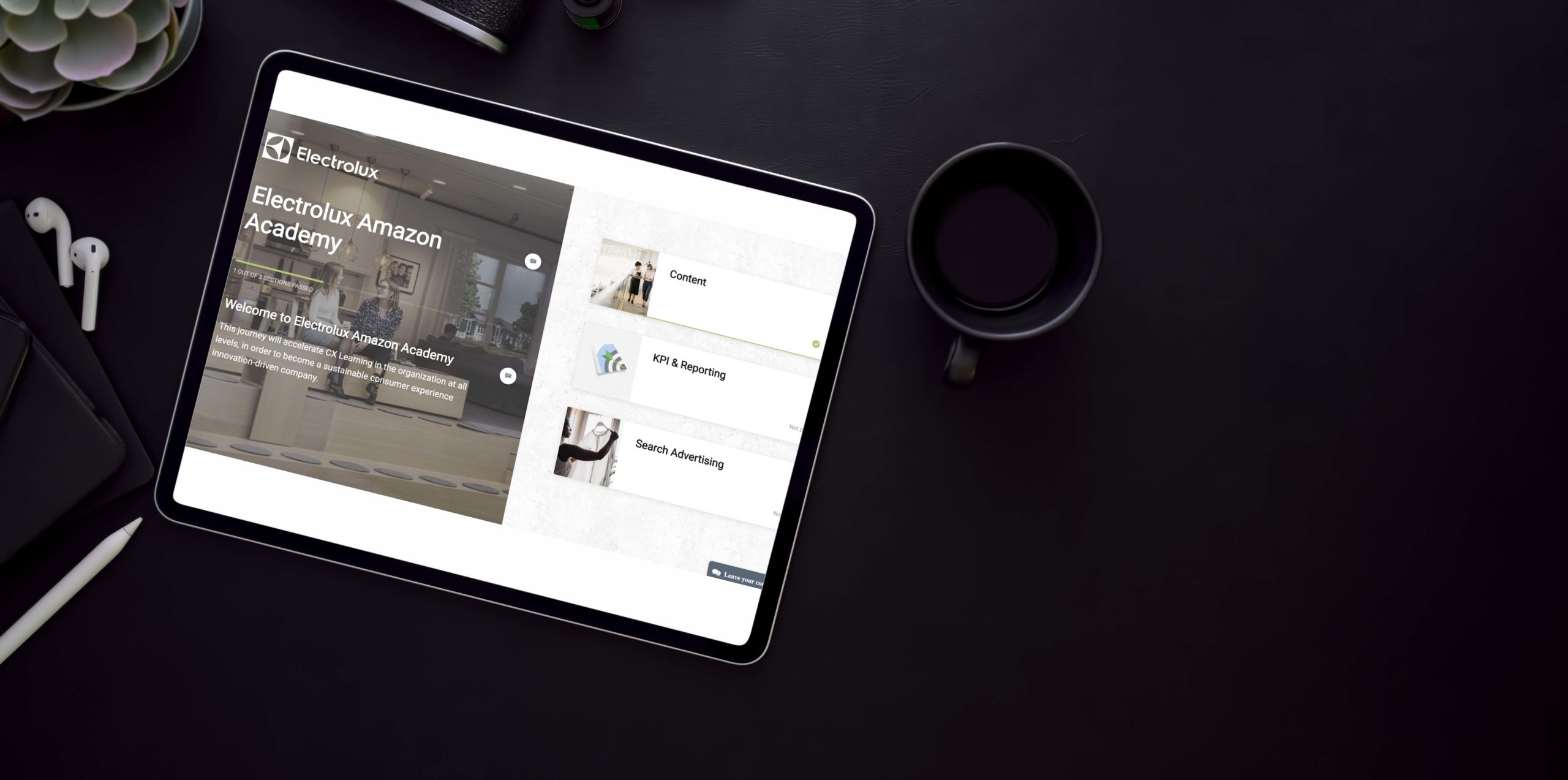There is a tendency in the B2B e-commerce sector to look across to the top B2C brands and play down the applicability of the features and techniques that make their sites market leaders. The idea that stylish sites and flashy features only fit the B2C model, while B2B should focus on the bread and butter options to fit the typically measured and professional tone of voice that many B2B brands use. This is misplaced thinking, based on the division of B2B and B2C. In reality, there are businesses, there are customers, and there is e-commerce. Shopper psychology spans across each; the features that allow B2C brands to excel in the online space are there because they work. Chiefly, personalisation.
Personalisation has always played a role in commerce. In the past, personalisation existed in retail as an in-store assistant, and in industry as a sales rep that would build a relationship with the customer over time, learning their needs, their pain points and how they liked to conduct their business. These approaches have always led to a much improved buying experience; faster, easier and more accurate. But these relationships take time to build; it’s a long term process of listening, learning and responding. And while human-to-human contact is still very much valued, digital technology, data tracking and analysis can bear the load. When implemented well, personalisation can speed up sales cycles and nurture prospects into loyal customers.
Advancements in digital technology have radically cut the time it takes to understand each individual customer and provide a personalised commerce experience. This technology is widely available, often built in to your content management system; all businesses now have the ability to implement personalisation strategies into their marketing and commerce efforts. This is good news, seeing as smart personalisation engines used to recognise customer intent can lead to an average profit increase of 15%. The flipside to this, is that personalisation has moved from an added benefit of certain businesses to an expected feature across every experience. 33% of consumers abandoned a business relationship last year because of a lack of personalisation. This is a necessity, not a nice to have feature.
Utilising account specific data
When starting to think about how your business can use personalisation in its commerce sales funnel, begin by thinking about how the company can collect data about customers and visitors. It’s important to begin with data capture, as the implementation of features depends on the type of data collected.
For specific customers, data primarily comes through the account creation process: job function; past purchases; which pages they have previously visited on the site; their dwell time; on-site search history, and so on. If the current data collection on account creation is limited, build this out for future customers and consider requesting current users to update their profile with more information upon their next login. Rather than hiding the motive, make it clear that the company will be using the data for an improved, personalised shopping experience. This clarity will boost the numbers opting in to data sharing, as it clearly offers a mutually beneficial exchange.
Putting this in place, electronics manufacturer Omron was able to create a site that adapts to the needs of each visitor. By using information on the job function of each logged in visitor, the Omron site could dynamically adapt and funnel distributors, systems integrators, Omron employees and end users to the appropriate pages. This is a simple solution, using just one piece of data to adapt the site, but it has a major impact, with the ability to scale up personalisation based on further gathered information.
Making use of digitally automatically collected data
Thinking about data capture also means thinking about the information that is automatically collected when a user visits the site, whether logged in or not. Their location data, the search term that brought them to the site, their onsite user journey – all of this information can inform your personalisation approach. Personalisation based on this information is subtle, possibly unnoticed as the visitor explores the website. They may not recognise the personalised experience, but will come away thinking that the shopping experience was quick and easy.
This also applies to classic customer segmentations, a general grouping based around shared behaviours. Personalisation doesn’t always mean single individuals. These segmentations can be useful when thinking about broader data automatically collected by new visitors to the site, as the depth of information isn’t there to create an individual response. As an example, an electronic parts company could use site search data to establish a segmentation that prominently displays associated purchases to visitors.
With an understanding of how data is collected, your business can begin planning the execution. At this stage, think in terms of what can be done onsite and off-site. While it is easier to control the onsite content and design, focusing solely on the website can see businesses missing out on the opportunity to fine tune their contact with customers through advertising and direct messaging.
Dynamic content
Onsite, dynamic content is a useful tool to make use of. This is content that adapts based on the data that is fed into the CMS, whether it is account data, previous purchases, search terms, and so on. The most obvious use is often found in the leisure and tourism space; if a visitor clicks on a number of pages relating to Italian destinations, the site can adapt the background images on more general pages to show Rome, Venice and Florence.
In the B2B space, dynamic content can be used to display relevant information, based on what is known of the customer. If they have listed their job function as logistics, they can be shown contextual information on delivery times and options, while a member of the finance team will see more about pricing options and different payment plans.
Accelerating everyday tasks
Speeding up common processes is another use, particularly helpful when looking to keep long term customers engaged. There will be a number of actions that returning customers have to redo with each visit, the most obvious example being adding items to the basket.
This is particularly important for B2B commerce as orders can be large and complex, and customers are more likely to repeat their orders when compared to B2C. Improving reordering was a key feature when developing Brenntag’s new commerce platform, Brenntag Connect.
As a chemical distributor, Brenntag has a strict process when allowing new customers to use their service. Customers are typically placing large, identical orders, leading Brenntag to create an automation service that places repeat orders and provides relevant contextual information when customers need to make an adjustment. This is a clear indicator of why it’s important to remember that personalisation is not fitting to how customers buy, it’s fitting to how customers behave.

Supplying more information to upsell
When customers are returning to reorder from your company, there is an opportunity to upsell existing products and promote new ones. This goes beyond ‘customers who bought X also bought Y’. This form of personalisation should aim to suggest alterations and explain the reasoning, based on the specific customer’s order. Think of it as a digital representation of the sales rep relationship, understanding the developments in a customer’s business and reacting with new solutions.
It can also be developed into a website feature, an interactive problem solving flowchart or chatbot that allows visitors to input their problem or need and see what solutions the company would suggest.
Optimising site speed
Not every on-site personalisation improvement is interactive and clear for customers to see. Adding in predictive loading is one example, a feature that speeds up the load time for each page on your site based on similar customer journeys.
Customers may never realise that the site they visit uses predictive loading, but they will notice if a site is slow to load. Selling needs to be as smooth as possible; slow loading leads to a larger bounce rate. Installing features, like predictive loading, that uses the information gathered when analysing personalisation can ensure the process never stalls.
Off site-actions
Personalisation also applies to actions that the company makes off-site. Email is one area, automated workflows for customers that left the site without checking can bring them back, boosting conversion through reminders and specialised offers. This can similarly be used for surrounding purchases, following the frequency of repeat purchasing or the typical time it takes for a customer to branch out to a new product.
Also consider how the purchasing journey exists across different touchpoints such as apps, social media and face-to-face meetings. Is it easy to bring up the customer profile and optimise their order based on this information? This kind of integration creates a seamless experience, perfect for B2B’s longer, omnichannel purchasing journeys.
Facilitate an easier commerce experience
In each recommendation, the end goal of facilitating a faster, easier, more accurate commerce experience remains the number one priority. By hitting each aim, the business makes each customer more likely to checkout, more likely to return, and more likely to talk to people in their industry about how great purchasing from your business is. These improvements build up, a snowball effect that ultimately results in increased sales and larger, loyal customer base.
More Insights?
View all InsightsQuestions?
Managing Director UK
Brian Robinson
What are the biggest challenges in the B2B market? Speed, reliability, simplicity and reasonable prices. What is Amazon particularly good at? Fast delivery, reliable communication, simple ordering processes and unbeatable prices. As far as delivery processes are concerned, Amazon is on the move by land, air and sea. Amazon has already taken the step from B2C to B2B in the US – now Germany is being considered.
Amazon Business Facts
- Launch in Germany December 2016 with B2B marketplace Amazon Business
- The starter range comprises 100 million products
- 5 million articles on the manufacturing industry and trade
- The number of B2B merchants is not yet known
- The products are offered directly from Amazon
- B2B sales in the US have been running since 2015 – more than 45,000 retailers are online
- External trading partners can make their goods available to Amazon’s business customers (not only manufacturers and wholesalers)
Advantages of Amazon Business from a seller’s point of view (Sell-side)
- Increase in turnover and market share (expansion of the product range for B2B needs)
- Acquiring and retaining new customers through efficient and automated ordering processes
- Personalisation and data collection for personalised offers
- Special Amazon Business Marketing Campaigns
- Wide range coverage for the B2B segment from a box of printing paper worth 1.00€ to large machines such as hydraulics brakes worth 60,000€
- Integration of up to 18 general and separate quality-related information in the offers is possible, for example, ISO: 9001/AS: 910
- Assignment of National Stock Numbers (country-specific product labelling) for customs classification
- Exclusivity – Special offers are only visible to Amazon Business customers
Business models on Amazon Business
Amazon Business Vendor
In this program, Amazon plans directly with the supplier and lists the products in its own stock. Amazon is in principle a wholesaler, which resells the products to business customers via the Amazon Business Platform:
- Invitation only by Amazon
- Suitable for major manufacturers, well-known brands and selected wholesalers
- The supplier is responsible for the product listing selections
- Amazon determines the sales price
- Shipping by Amazon Prime
- Special marketing opportunities
- Higher sales in the vendor program, similar to the B2C segment
Amazon Business Marketplace
In this program, the products are sold by the supplier directly via the B2B platform:
- The provider determines the prices personally
- Independent determination of product listings
- Total control of sales activities
- No contract negotiations with Amazon
- Direct contact with the customer
- Amazon Business is only the provider of the infrastructure
- Variable sales fees and monthly royalties
Amazon Business Marketplace with FBA (Fulfillment by Amazon)
- Sales via the Marketplace with shipping through Amazon FBA
- Products are the property of the seller
- Use of Amazon warehouses
Marketing measures with Amazon Business
Marketing measures also differ from B2C in terms of strategy development. The professional design of the marketing measures is essential for Amazon Business and should be carried out by experts in order to generate better performance and less divergence. It is important for Amazon Business to know the different B2B marketing campaigns on Amazon Business in order to successfully position their own products in these campaigns.
Choose the right B2B advertising strategy:
- Clear structure and systematics across all campaigns
- Appropriate naming conventions
- Detailed keyword analyses
- Optimization of products (determining relevance factors)
- Specification of negative keywords
- Monitoring and selection of products
- Clear targets for sales and costs
- Optimal control of CPC bidding
Content optimization on Amazon Business
Product information differs in B2B and should therefore be adapted to individual needs. Complex products exist in the B2B sector and B2B buyers tend to be more fact-oriented and critical for operational reasons; they like to use videos, product brochures with instructions or product evaluations prior to purchasing. B2B content requires a high degree of individualisation. In this case, it is important to know the search behaviour of decision-makers and business customers and to cover them with a wide range of keywords.
In both B2C and B2B, the purchase process starts with the necessity or need. Only the search for information and the evaluation of alternatives in the B2B segment is more formal and structured or more experienced. It is extremely important to know the difference between the influencing factors and processes and to integrate them into the content.
Advantages of Amazon Business from a business-customer perspective (Buy-side)
- Comparison of several offers
- Invoice purchase for qualified buyers with 30-day payment term
- Companies can access the entire Amazon Business product catalogue through technical integration into their own ERP system
- Millions of products especially for the B2B sector are available within one day
- In the US, it is possible to search via MPN, UNSPSC (United Nations Standard Products and Services Code)
- Only Amazon Business customers can view prices for a variety of items
Application cases for companies of Amazon Business (Buy-side)
Authorized persons or groups purchase for the company:
- Savings for B2B customers through quantity discounts
- Amazon Business Accounts include pricing and volume discounts on millions of products in a wide variety of categories
- Free delivery within 2 days of a purchase priced 29€ or greater
Automated approval processes for purchasing managers and administrators:
- Overview of all participants and groups regarding the approval process defined in Amazon Business Backend
- Administrators can define permissions… As soon as the order total exceeds the limit, the order is automatically forwarded for approval
- Approvals can be determined individually for each person in the company from a wide variety of departments
Define payment methods:
- Administrators can define common and individual payment methods
Multi-user accounts:
- Several authorised persons for one account with different access codes
Increased efficiency through automated processes such as receiving invoices or creating payments:
- System Integration Payment
- ERP-system integration
- Supplier consolidation
- Business-only selection
The registration process on Amazon Business
With just a few clicks, you can convert your current account into a business account. A business account on Amazon differs from a B2C account on both the Amazon frontend and backend. When switching to the B2B account, additional persons and groups can be added and receive the respective account rights for account management including account information, order history, addresses, payment methods and personal data.
What effects does Amazon Business have on B2B E-Commerce?
The answer to this question depends on the observer’s point of view: On the one hand, the effects are very small; however, on the other hand, they are gigantic. Why are they small? Amazon itself can best answer this question, as the customer journey from Amazon B2C to B2B can be easily adapted.
- How does the B2B buyer want to be treated – keyword service/loyalty
- What is the purchasing process in general?
One thing is certain, B2B buyers are mature B2C customers and understand the positive and negative aspects of the process, alongside the advantages and benefits of online shopping. Consumerization is the technical term among B2B experts. In other words: the customer in B2B e-commerce also demands a unique shopping experience and professionalism as they have previously encountered this from the B2C area. For Amazon, B2C customers are also B2B customers. They increasingly want to experience the advantages of fast shopping and will expect, in the near future, that they can shop in the evening hours from various manufacturers, wholesalers and vendors.
With Amazon Business, manufacturers and wholesalers can open new customer groups that could not be reached by closed systems. It was only a matter of time before Amazon would offer this unique B2C buying experience on the business side, in Germany as well. Marketing participants who pick up business customers similar to the B2C segment and offer them purchasing as easily and automatically as possible are most likely to succeed. The participants in the B2B market are buyers, decision-makers and managing directors. Purchasing decision-makers look for suitable manufacturers, dealers and service providers for their B2B orders every month. No brand manufacturer should miss the trend. It is recommended to adapt the product range to the B2B sector at an early stage.
The other side of the medal
On the other hand, there will be major challenges and differences in B2C e-commerce.
- What mechanisms does Amazon Business offer to reduce the costs for buyers?
- How can the purchasing process in the company be optimized, which is reflected in a higher profit?
- How do I get the article data of the suppliers into the management system?
- How do I manage to organize the receipt and processing of orders easily?
From the point of view of the B2B customer, this means experiencing purchasing as an overall project. Just a user interface is not sufficient to place an order. The specific B2B processes, depending on company size and industry sector, must be taken into account in the purchasing process. Example: The warehouse employee scans the missing articles in the warehouse, and the buyer orders the missing articles via the ERP system.
Are the typical Amazon advantages compatible with the B2B trade?
A large number of different B2B products requires an ecosystem that plays out the relevant suppliers quickly and reliably. In other words: B2B buyers can only be convinced with sophisticated product search engines and a smooth connection to the internal systems.
- 94% of business customers prefer to conduct prior online research before making a purchase in the business environment
Amazon Business offers new opportunities in B2B trade as well as typical solutions that provide business customers with a high degree of automation.
What functions make Amazon Business so special compared to the B2C platform?
Special features that are specifically relevant for B2B customers on Amazon Business:
- All Amazon Business, customers can purchase with a payment of term of 30 days
- Net prices are displayed on the search results page and on the product detail page
- Value-added tax is shown separately on invoices
- The business account can be divided into several accounts
- Different professional groups and cost centres
- Groups that view payment methods and shipping addresses together
- Individual payment limits and approval rights
- Assign your own order numbers for orders
- Detailed and bundled reporting for purchasing managers
- Overview of purchases and spending by period and department
- Integration of procurement solutions such as Ariba or Onventis (Expenditure & Supplier Management, Management of financial supply chains, E-Commerce & Account Management)
- With a purchase of 29€ or more, business customers receive free delivery
Deals by sector
To be eligible for the promotion, you must have an Amazon Business account. Once logged in with the account, all offers are displayed under Business Deals. Here is the distinction between current, future and expired offers:
- Business deals can be reserved for up to 10 copies per customer
- All other special offers can only be reserved for one copy of the respective article
- Actions have a fixed period of time
Amazon Business Warehouse Deals
- Significantly reduced offers
- Returned offers
- Tested articles
- Free Amazon Prime Premium Shipping
- Opened and used products
- Business deals can be reserved for up to 10 copies per customer
Conclusion
The fact that product search on the internet is increasingly taking place in the B2B sector and that the purchasing behaviour of B2B customers is increasingly being adapted to that of B2C customers proves that the B2B market should not be underestimated and that manufacturers should start planning now. There is no better test run than Amazon Business to identify the B2B market that suits you best to manage products and campaigns.
The B2B platform offers an optimal infrastructure for B2B vendors due to the high level of automation processes and the direct communication option (live expert) between supplier and customer. In this context, entire product portfolios can be marketed to a large extent, thus reaching both small and medium-sized companies as well as groups of companies (desktop purchasing). Not only industry products, but also consumer goods are in great demand at Amazon Business, and exciting questions are arising here:
- Does the B2B buyer really save money when shopping on Amazon Business?
- If special SKUs are released or created, or these are automatically created for all SKUs
- What is the handling of shipping within the EU or worldwide?
- How highly automated can the scaled prices be, for example, uploaded with feed lists?
Amazon Business offers special logins for the B2B area as well as a special view similar to the B2C and shows all categories, especially for Amazon Business users. A further benefit arises from the fact that external trading partners can make their goods available to Amazon’s business customers. So far Amazon has been negotiating with manufacturers and wholesalers via the former B2B portal Amazon Supply, and many business customers are already shopping in the classic B2C platform of Amazon. It’s only a matter of time before the B2B business is completely settled where the target group is. The advantages of being an Amazon Business Seller:
- Access to all Amazon customers + business customers from small businesses to large corporations to institutional buyers
- Ability to extend product offerings to business customers
- Increased visibility of business offers and lower fees for bulk sales
- No additional fees
- Access to shipping through Amazon and standard-activated Europe-wide sales
- Special offers from qualified Amazon Business resellers for increased visibility
- Possibility for business customers to offer special prices, quantities and discounts
- Exclusivity: Vendors can distribute products exclusively to business customers
- Increased sales opportunities through purchase on account
- Invoices can be automatically generated for all orders and made available to the customer
- Automatic display of net prices, where sellers can display and calculate net prices for business customers throughout Europe
Amazon Business promises a lot and has kept its promises thus far. Exciting changes are constantly occurring, so stay tuned!
Insights
View all insightsQuestions?
Partner
Marc Aufzug
Manufacturing and industry have fueled the evolution of civilizations since the beginning of mankind.
Approach
As the cornerstones of commerce and entrepreneurship, the number of industrial organisations is multiplying year by year. Yet, they often still rely on legacy systems for their production methods, supply chain management and overall operation. There has also been a massive shift in the way manufacturing companies need to reach, engage and sell to today’s buyers. To keep up with the demand and expectations of global clients and consumers, manufacturers must adopt disruptive digital technologies in making and delivering.
Industry and innovation: building a better world
From technical diagnostics, master data management and intelligent warehousing, through to supply chain 4.0, IoT, robotics and analytics, the industrial sector has more opportunities than ever to reduce costs and increase operational excellence across the board. Data-fuelled technology enables radical transformation across the whole supply chain, creating new business models and ecosystems. The sharp rise in the use of self-service channels requires outstanding digital experiences. The biggest challenge lies in capturing sustainable impact at scale, both in the short and long term. Technology is only as good as the thinking behind it. Only a customer-centric approach will ensure your future growth and acceleration.
Our approach to manufacturing & industry
Over the last 20+ years, we’ve helped many of our consumer manufacturing and industry clients build and accelerate their digital business. Here’s how:
- Informed by industry insights: We’ll help you tap into unused data lakes and find new data sources to connect, enrich and distribute across the supply chain. Using scalable solutions that fit your needs, we help create actionable data insights that further your goals.
- Supported by technology: Just like the machinery you use, the delivery of your value depends on the quality of the tools employed. We’ll help you navigate the complex environment of technologies and find, implement and use the best fitting solutions.
- Creative at the core: Combining data and technology, we take a creative approach for your business challenges. Not only will this help you stand out, but it will also help evolve and accelerate your business in new and innovative ways.
- Move with the times: Digital never sits still, and neither do we. From emerging technologies and industry trends, we’ll stay on top of it all so that you’re always at your best.
- People with passion: We build the right team for the job, choosing experts in their field who understand your business goals and what you need to get you there.
- Not just for now: Building an engaging strategy takes time and focus. As well as our mutual short-term goals, we look at the bigger picture to build a strong and stable working relationship for years to come.
Cases
View allOur Clients








We value a great working relationship with our clients above all else. It’s why many of them have worked with us for years as their trusted partner.
Questions?
Strategy Director













